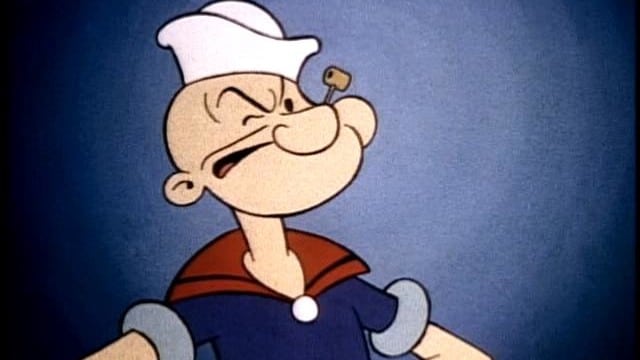
Famous Studios
Hercules may be the original superhero but he’s also something of a bore. The problem is that spectacular strength, when you get down to it, isn’t the most charismatic of superpowers. A gigantic, muscled titan without either personality or weaknesses can only wow an audience for so long. This is why Superman has the alien back story, why Achilles has that issue with his foot and why The Hulk suffers from anger-management issues. It is also why a great many Hercules films are hopelessly dull. And here we are, faced with yet another trip back to labored Ancient Greece with Brett Ratner and Dwayne Johnson.
But I’m not here to judge the newest Hercules. I’m also not going to try making you watch the old animated television series, The Mighty Hercules. It ran from 1962 to 1966, trying to capitalize off of the wave of Italian-made muscled movies of the era. Aside from some truly amazing theme song lyrics (“Sweetness in his eyes/Iron in his thighs), it was made on the cheap and features some pretty terrible scripts. Part of its problem, actually, is the inherent blandness of the character. He’s a powerhouse of strength with an impenetrable, enormous chest. He’s always going to win. That’s dull.
Enter a long-beloved American hero, Popeye the Sailor Man. He’s the sort of guy who wouldn’t even flinch when faced with this boring Greek demigod in the ring. Or, rather, the Olympic Stadium. 1948’s Popeye Meets Hercules is set at the very first Olympic Games, where the gods themselves have come as spectators. Hercules is the anticipated champion of every event, bursting into the arena like a particularly cocky boxing legend (and looking a lot like Popeye’s arch-rival, Bluto). No one dares to challenge him, at least not until he makes eyes at Olive Oyl. From that moment the sailor is up and fighting, determined to defend his girlfriend and his honor.
This particular short is from what could be considered the second era of Popeye cartoons. The sailor was first introduced by Fleischer Studios in 1933, in a Betty Boop cartoon. He was given his own series right away, amounting to well over 100 cartoons by 1940. Popeye remained popular but the studio began the new decade with a pile of financial troubles. In 1941 its parent company, Paramount Pictures, seized control and made the Fleischer brothers resign. The company was renamed Famous Studios, a fresh outfit that produced 122 Popeye cartoons between 1942 and 1957. Its animators also had a hand in the Popeye TV series that ran on ABC from 1960 to 1962.
Famous Studios was no slouch. The team that worked on the Popeye cartoons included a number of very talented animators who stayed over from the Fleischer years. Popeye Meets Hercules had a particularly legendary director, a Disney original. Bill Tytla began to work for Walt in the mid-1930s, rising quickly within the company. Eventually he became one of their top character animators, primarily responsible for Dumbo, Grumpy in Snow White and the Seven Dwarfs and the monstrous Chernabog in the “Night on Bald Mountain” sequence in Fantasia.
You can see all of the talent at work in Popeye Meets Hercules. It’s oddly prescient in its use of flesh, anticipating the aesthetics of the live action Italian sword and sandal pictures of the 1960s. In those movies the very body of Hercules, usually played by a bodybuilder like Steve Reeves, was used like a special effect. (For more on that, here’s an analysis of the homoerotic beefcake movies of both now and then.) This cartoon does much the same, using the malleability of the demigod’s enormous animated form to entertain. One bicep becomes a set of bowling pins, the other a ball that rides across his chest to knock them down. When he gives Olive Oyl goose pimples, they manifest as a line of geese swimming through her arm.
It’s also hilarious, much of which comes from another trope of the Golden Age of Animation. The images of Classical Greek culture are Americanized for comic relief. Zeus has a cigar and the bushy mustache of Groucho Marx. The arena is treated like a baseball stadium. The satyrs are unionized. All of these throwaway jokes add up to an overall tone of specifically American irreverence, one which can be filtered through any mythology. There is even a goddess of spinach, invented for just the right occasion. By turning Hercules into a villain and filtering his world through the lens of 1940s animation, Tytla and the team at Famous Studios crafted a thoroughly, joyfully American cartoon.
